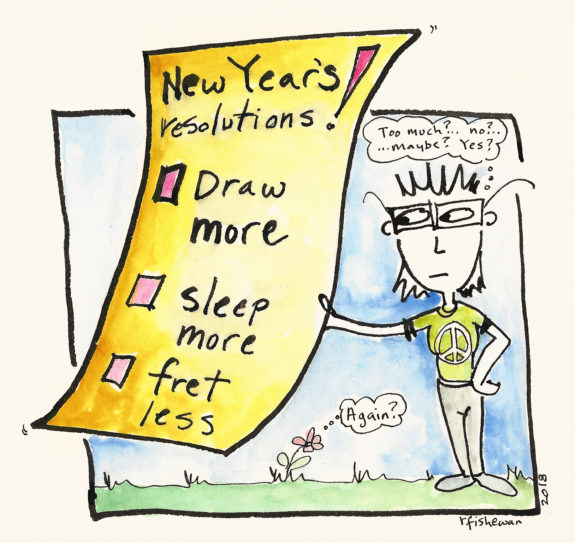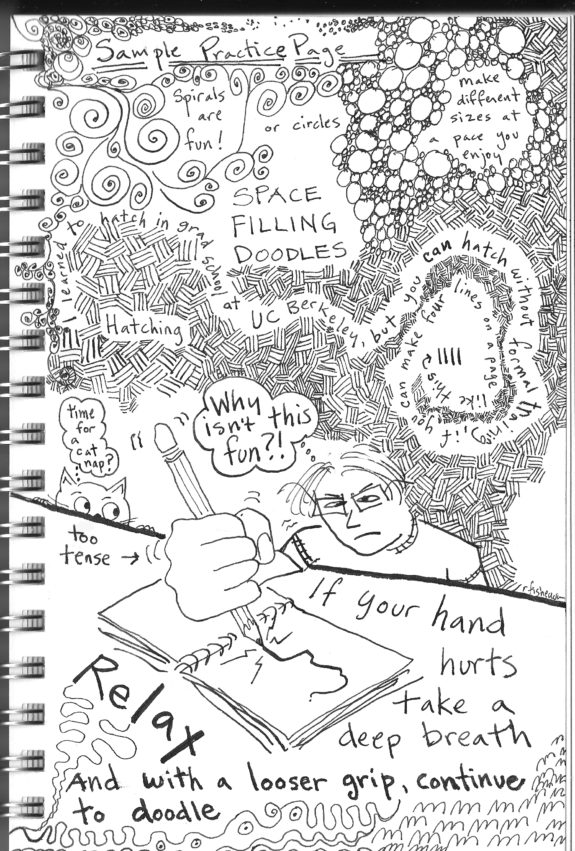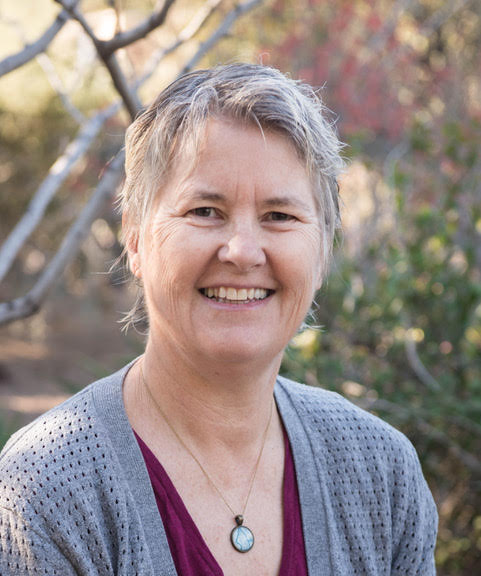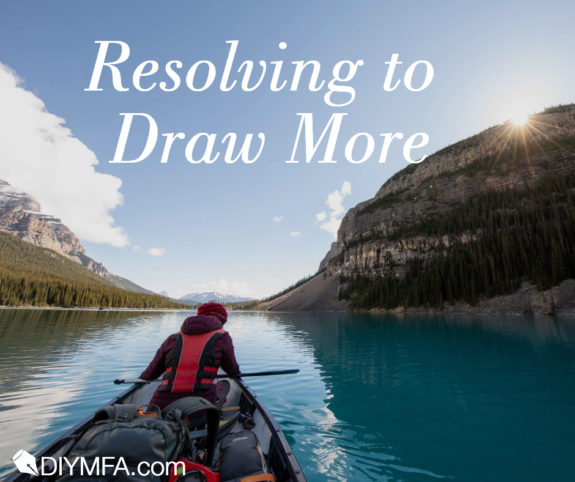It’s a new year and maybe you made a resolution to draw more. Or to start drawing. Then, like most new year’s resolutions, the task overwhelmed you and you’ve already begun to dial back your expectations and replace your efforts at self-improvement with guilt and shame.
Take a moment from beating yourself up to read/look at the tools and tips below, offered to help you make drawing a part of your writing life (without all the remorse that accompanies your failed expectations for the coming year).

You need three things to draw: paper, pen and ink. Or just two, if you use a pencil.
Step One: Find Paper
So, paper. You might already carry a notebook that you use for writing with you at all times. If so, try drawing in it too. I write and draw in the same book, because having my thoughts in more than one place scatters them. So, the first place to start drawing would be in your daily writing notebook with your favorite writing tool.
If this stresses you out, because it feels like your writing space is being compromised, then get another notebook (or a different pen…more on this later). Call your book a notebook, sketchbook, daybook, journal, sketchpad, doodle space, whatever you want to call it, so long as the name doesn’t create a barrier to you drawing in it.
It’s best if your drawing pages are handy at all times and not too precious. I recommend a book with blank pages, though Lynda Barry uses lined paper, and lots of architects and mathematicians like gridded paper, so blankness is not mandatory. What’s essential is for it to feel lovely in your hands, but not be so costly you fret that drawing badly in it would be an offence to its value.
If you have a book that you’re afraid to draw in, because you might “ruin” it, replace it. Go to an art store and fondle lots of sketchbooks. Feel the paper. I usually rub it between my fingers to gauge the thickness and texture of the paper. I like my paper a little thick and slightly rough (call it toothy, if you want to sound artsy). Also, ink smears on glossy paper and the shiny reflective surface bothers my eyes, so I never use paper with any sheen to it. Hold the sketchbook, imagine drawing in it in public. Size matters. If it’s too big, the blank pages will feel daunting and will attract insects on sunny days. If it’s too small, you’ll fill it up quickly and lose it in your purse/bag.

My current sketchbook is the Bee Paper Company Super Deluxe Mixed Media. It’s 6 x 9 inches, spiral bound, with 60 sheets of paper. I switched last year from 65-pound to 93-pound paper, because the thicker paper takes watercolor better and I wanted to watercolor more. Years ago, I used perfect bound sketchbooks, to honor my work with fanciness, but gave those up because spiral bound sketchbooks open easier and I don’t have to make an effort to keep the book open while I draw (My arm strength is not impressive. I can’t even do one chin-up).
Books with exposed stitch spines are also great, because they open flat and don’t have a metal spiral to snag on things in your purse or bag. The books I’ve found with exposed spines have a Coptic stitch, an ancient glueless technique once used to stitch together papyrus in Egypt. While I love cool old-school tech, I haven’t found an affordable Coptic stitch book with paper I like enough to switch, but I am considering DIYing one to see if I can start making my own sketchbooks from paper I make from yard clippings. Maybe that can be my resolution next year. Ha ha, no.
A super important feature of your sketchbook is that it must fit in your purse/bag, so you can draw/write whenever you want. I test the fit in the store before buying the book. Word of caution: always do this in front of a store clerk so they don’t suspect you of shoplifting.
What’s most important is that you love drawing in your sketchbook. Let the book become an extension of you, not an intimidating version of you, just an anyday you. A you that lets you make crappy drawings all over its pages without ever judging you. That you.
Step Two: Find a Drawing Tool
So, a few words about pens, ink and pencils. Experiment. Find people whose drawings you love and try to learn what tools they use. For drawing and writing, I prefer fountain pens. They aren’t disposable, feel awesome, and there’s a huge variety of ink that works with them. For a while fountain pens faded out of what I would call the useful realm. I quit using them for about a decade, because they cost a bucket of money and didn’t work well in the dry desert air of Arizona where I live. They became over-decorated baubles for collectors. Drawing with them would’ve been like trying to sketch with a Gertrude McFuzz tail feather. Thankfully, a fountain pen renaissance is upon us and you can find amazing pens for reasonable prices. There are so many awesome choices for fountain pens and ink, that I can’t even begin to cover all the options.
If you want to explore fountain pens, I recommend you check out The Goulet Pen Company. They have a great website, full of videos and info on pens and ink. It’s your open door into fountain pen nerd heaven. I relax watching Brian and Rachel Goulet talk about drip and smear tests.
My go-to writing pen is a Lamy Al-Star. It flows even on the driest of desert summer days and feels great in my hand. And the clip slips onto my tee-shirt neckline with no bother.
For ink in the Lamy, I just switched from Pelikan 4001 to Noodlers Black, thinking it might work better with watercolors. It still runs, but only because I’m impatient and don’t wait for it to dry all the way before I paint over my lines. For making speedy paintings, I have another pen with DeAtramentis Document Ink in it. I can watercolor over this ink right away.
So, currently, I carry the Lamy for writing and drawing and, for ink/watercolor, a Sailor Fude De Mannen-Stroke Style Calligraphy Fountain Pen-Bamboo Green-Nib Angle 55 Degrees, a mouthful for a pen I bought for ten bucks on Amazon. The Fude pen is fun for loose doodles. If you’re not in the habit of turning your pen/pencil around in your hand while you write/draw, this is a good one to practice on, because it’s light, round and the line varies a ton depending on how you’re holding the pen, so you can really get a feel for the value of pen rolling.

Pencils are one of the greatest human inventions. They work in space. I’ve used them while SCUBA diving to make notes. Pencils rock! If pencils are your jam, you maybe already have a favorite pencil. Mine is the Ticonderoga Black #2. There are many other lovely pencils. Find one you love. And by one, I mean, you can draw with just one pencil type. I made all the drawings in my book By the Forces of Gravity with my favorite pencil. You don’t need every hardness from 9H (like drawing with a nail) to 9B (like drawing with soft butter) to make pencil drawings. A cool shop for pencil lovers is C.W. Enterprise in New York (and online). For more pencil love, check out this Ted Talk by pencil shop owner, Caroline Weaver. It’s a delight.
Once you have your drawing kit assembled, you can start drawing. Anything. Or nothing in particular. Just make marks on the page. Space-filling doodles can get you going (see below). I’ll post more doodle-prompts in other posts, between reviews of amazing books with pictures.
Happy Drawing!

 Rebecca Fish Ewan, a poet/cartoonist/writer and founder of Plankton Press, teaches landscape architecture in The Design School at Arizona State University. She grew up in Berkeley, California, and now lives in Arizona with her family. Her cartoon/free verse memoir, By the Forces of Gravity, was published in 2018 through Books by Hippocampus. She’s working on a drawing book for writers right this very second. You can connect with her at rebeccafishewan.com.
Rebecca Fish Ewan, a poet/cartoonist/writer and founder of Plankton Press, teaches landscape architecture in The Design School at Arizona State University. She grew up in Berkeley, California, and now lives in Arizona with her family. Her cartoon/free verse memoir, By the Forces of Gravity, was published in 2018 through Books by Hippocampus. She’s working on a drawing book for writers right this very second. You can connect with her at rebeccafishewan.com.







